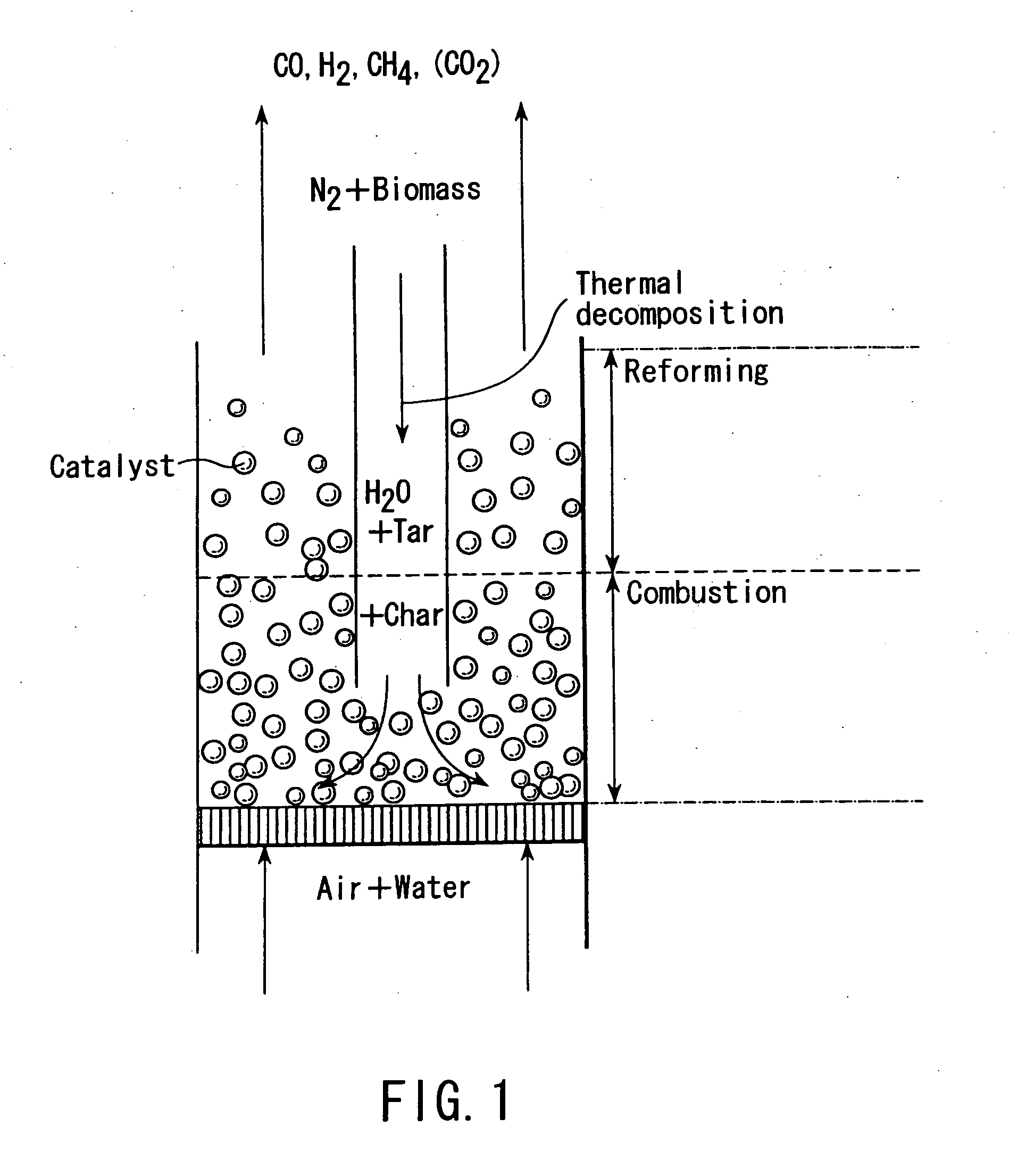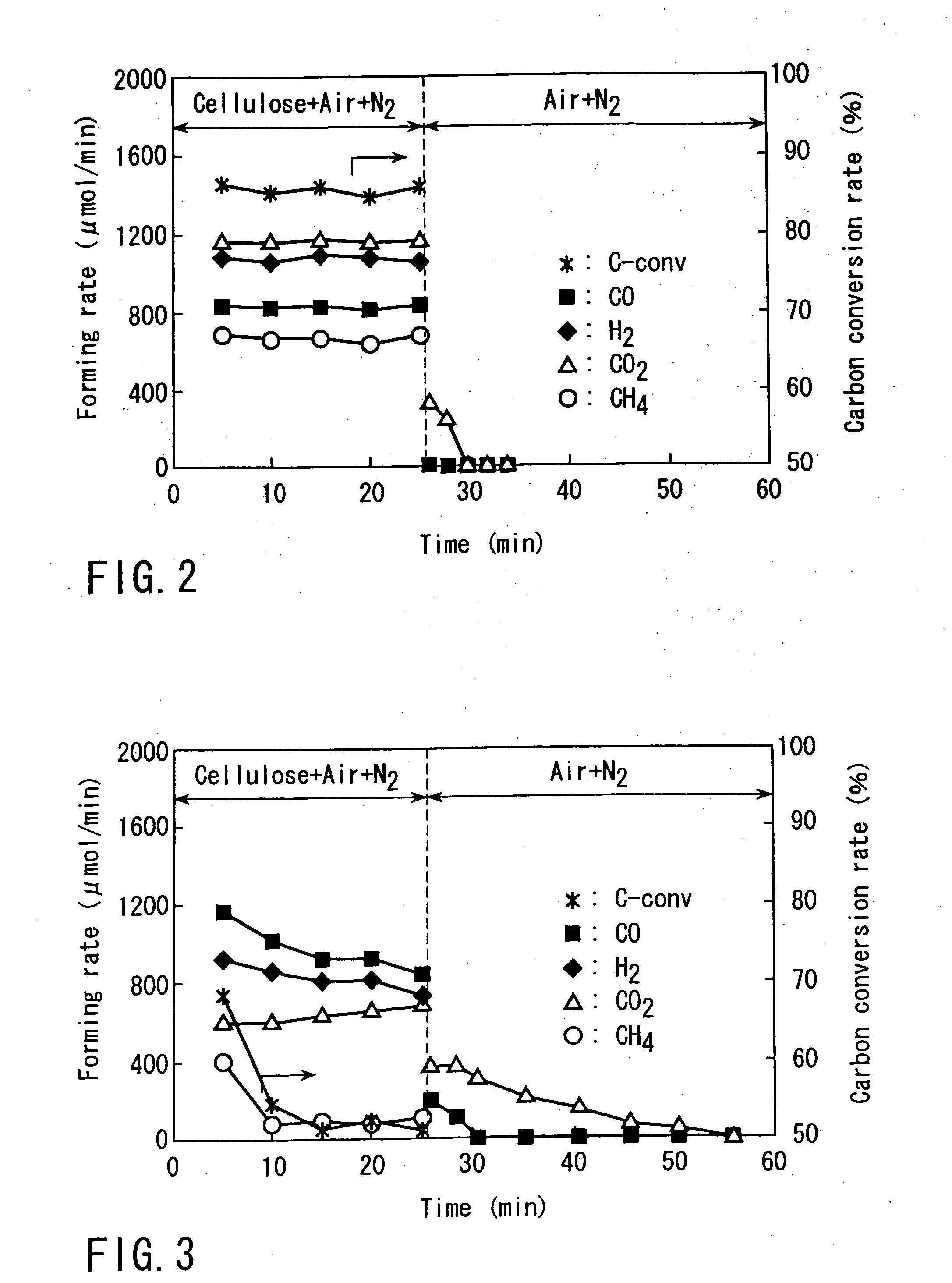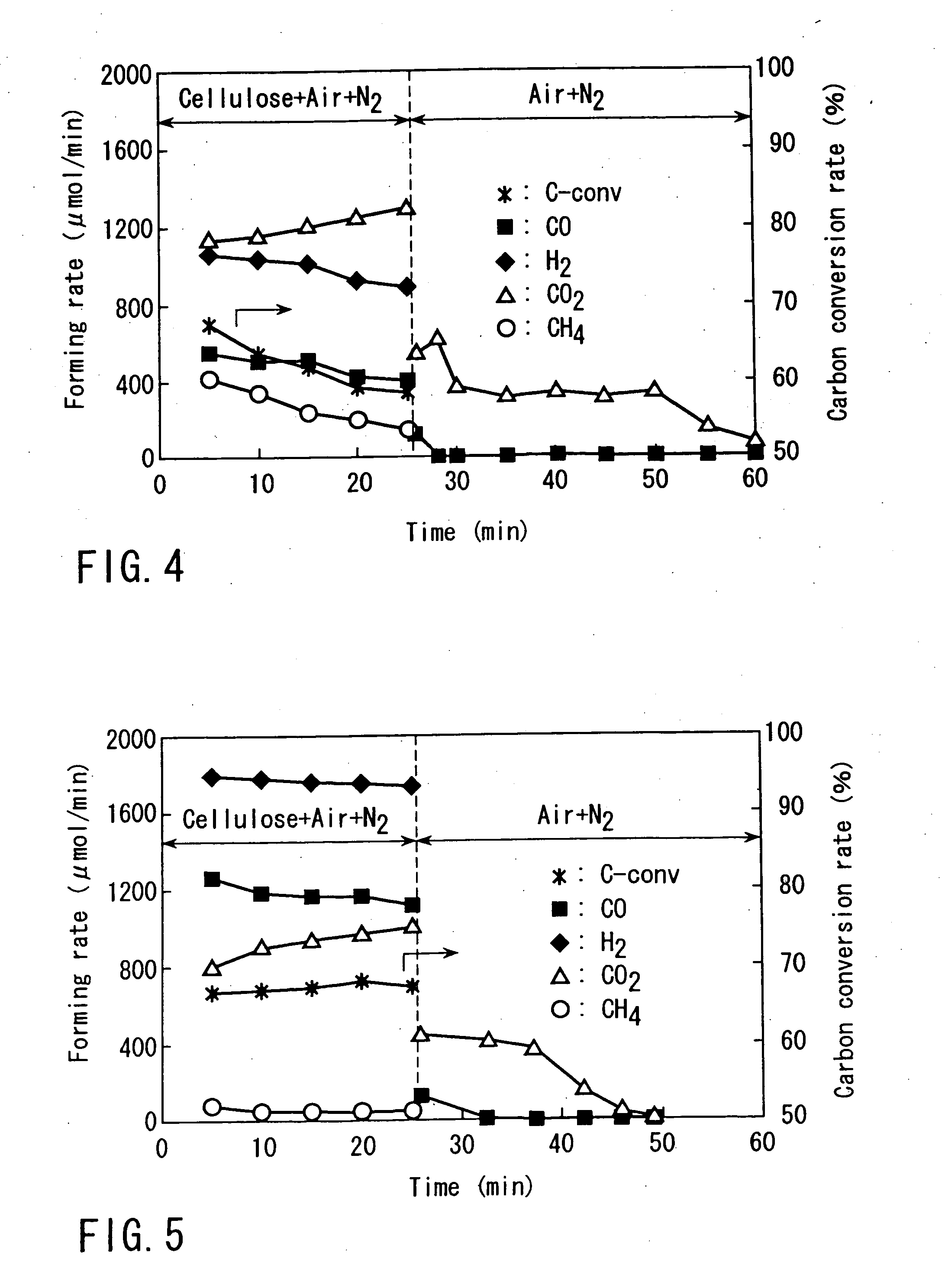Method for gasifying biomass and catalyst used for said method
a technology of biomass and catalyst, which is applied in the direction of physical/chemical process catalyst, combustible gas production, bulk chemical production, etc., can solve the problems of difficult gasification of biomass under low temperatures, tar or char tends to increase, and the failure to carry out a stable operation, etc., to achieve efficient gasification of biomass
- Summary
- Abstract
- Description
- Claims
- Application Information
AI Technical Summary
Benefits of technology
Problems solved by technology
Method used
Image
Examples
Embodiment Construction
[0040] The present invention will now be described in more detail with reference to specific examples.
[0041] Specifically, cellulose particles manufactured by Merck Inc. and having a particle diameter of 100 to 160 μm were gasified by using the apparatus schematically shown in FIG. 1.
[0042] A container made of glass was used as a feeder, and a glass cock for controlling the supply was formed in a bottom portion of the feeder. Cellulose particles were supplied into a catalyst bed by using an N2 gas stream passing through an inner tube having inner diameters of 5 mm and 8 mm. The gasification reactor was formed of a quartz tube having a height of 66 cm and an inner diameter of 1.8 cm and included a fluidized bed portion. Air and water were introduced into the gasification reactor from the bottom portion so as to reach the catalyst bed through a quartz dispersion plate. Steam was supplied by using a micro feeder. Water that was evaporated during its upward movement through a capillar...
PUM
| Property | Measurement | Unit |
|---|---|---|
| temperatures | aaaaa | aaaaa |
| specific surface area | aaaaa | aaaaa |
| particle diameter | aaaaa | aaaaa |
Abstract
Description
Claims
Application Information
 Login to View More
Login to View More - R&D
- Intellectual Property
- Life Sciences
- Materials
- Tech Scout
- Unparalleled Data Quality
- Higher Quality Content
- 60% Fewer Hallucinations
Browse by: Latest US Patents, China's latest patents, Technical Efficacy Thesaurus, Application Domain, Technology Topic, Popular Technical Reports.
© 2025 PatSnap. All rights reserved.Legal|Privacy policy|Modern Slavery Act Transparency Statement|Sitemap|About US| Contact US: help@patsnap.com



